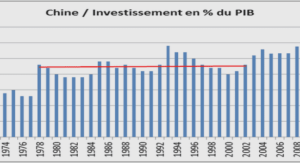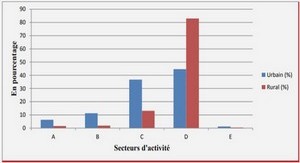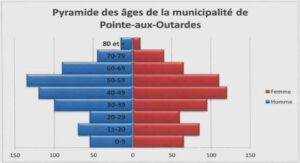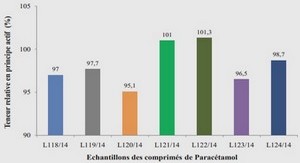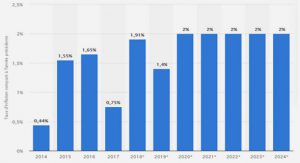Integration des véhicules électriques dans les réseaux électriques
Major Changes in the Electricity Sector
Electrical networks emerged in the late 19th century. They were initially small local DC networks intended for public lighting only. Throughout the 20th century, electrical grids have expanded and interconnected significantly. Similar frequency and voltage values were selected to harmonize the different local networks’ characteristics and make it possible to interconnect them. Today, due to the objectives of reaching a certain level of RES penetration while still ensuring the security of supply, electrical grids are facing major challenges. In this section, the aim is to to address these challenges and to explain how power systems’ operations are impacted by these changes. First, in section 1.2.1, the basics of power systems are recalled. Then, section 1.2.2 deals with the main changes happening in the power systems’ operations.
Main Characteristics of the Power Systems Main Components of the Electrical Grids
The electric power networks are divided into two parts: the transmission grid and the distribution grid. The former links the centralized power plants to the largest consumers and to large substations that feed the distribution grids. The transmission grid has a meshed topology to maintain the continuity of service and to increase the system stability in case of line tripping. In continental Eu rope, its upper voltage levels are 400 kV and 225 kV, and all national 400-kV grids are interconnected to commercialize electricity among the countries and to increase reliability. In each country, the transmission grid is operated by one (France) or several (Germany) operators called Transmission System Operators (TSOs) if the operator owns the grid, or Independent System Operator (ISO) if the operator manages the grids without owning the assets (Rious et al., 2008)6 . The substation transformers step down the voltage to feed the distribution grid at medium voltage level and then distribution transformers deliver the low voltage to small customers. The distribution grids were built with a radial topology to make them easier and cheaper to operate. The are operated by Distribution System Operators (DSOs). An important specificity of an electric network is the long lifespan of equipment (several decades) and their sunk costs. Thus, any evolution and investment must be carefully analyzed bearing in mind its impacts on the system security and operation costs. Alternating Current (AC) is used to carry the power from large power plants to final customers. Direct Current (DC) is sometimes used in High-Voltage applications (HVDC), for instance to connect an island with a continental area – however, DC remains marginal compared to AC. Energy Mix Several primary energies may be used to produce electricity: gas, oil, wind, solar, hydro, etc. An energy mix consists of the respective shares of the primary energies that are used to produce electricity in a particular network. It depends on local available resources, and strategic and technical choices to guarantee security of supply at all times. For example, France opted for nuclear power in the 1970s to ensure its energy independence, Norway has a 95% hydro mix owing to its resources, and Poland has a 90% coal generation mix. From the power system perspective, power plants are divided into three main categories: base-load plants (nuclear, run-of-river hydro, and large coal units), semi-base load plants (coal and gas turbines), and peak load plants (pumped hydroelectric storage (PHS) and gas or oil combustion turbines). The first ones have the highest investment costs, but the lowest marginal costs. They are supposed to operate more than 8000 hours/year. Conversely, a peak load plant has an equilibrium point at 300 hours/year, low investment costs and high marginal costs. Peak load plants are able to ramp up and down much quicker than base-load plants. System Operators (SOs) need to diversify the nature of the power plants operating in their networks in order to cover all their needs. Fig. 1.6 presents the energy mixes of several areas. Coal is still the main resource worldwide (40%) because it is the most affordable one. Nuclear represents only 12% of the world production, with large disparities among the countries, because nuclear plants have the highest investment costs and require a complex technological know-how. France has the highest nuclear share in its energy mix (≈80%). Denmark is the country with the highest share of wind, 6 In the rest of the document, the term TSO will be arbitrarily used, although ISOs are also concerned by this wording. Figure 1.6: Energy mixes of different regions. Figure created using data from (International Energy Agency, 2013a; Rseaux de Transport d’Electricit, 2016a; Minist`ere Fderal de l’Economie et de la Technologie, 2015; Danish Energy Agency, 2012) which remains marginal globally (as PV production). Hydro power is the most important renewable energy source (RES) in the world. Each generation technology has its own dynamic performances that characterize its flexibility: startup and shut-down durations, ramping limits (in MW/s), and minimum production output. The power plant flexibility is critical to securely operate the power system because generation must continuously balance demand. The optimal generation plan depends on the plants’ marginal costs, their flexibility and availability, and the load profile. It is the solution of a unit commitment problem (Guan et al., 1992). Frequency Control Frequency is a common characteristic within an interconnected network; at any node of the grid, the frequency value is the same (conversely to voltage, whose value is different from one node to another). The frequency value fluctuates around its nominal value at each moment (50Hz in Europe and Asia, 60Hz in the USA and both in Japan). However, maintaining the frequency close to its rated value is important, because most of the materials have been optimized to operate at this frequency value, and devices with magnetic materials may come out of their linear range. The local TSO is responsible for controlling the frequency value. Fig. 1.7 shows the instantaneous values of the frequency in the three North-American interconnected areas. The frequency is linked to the generators’ rotation speeds, and its variations reflect the real time balance between supply and demand. If electricity generation exceeds electricity consumption, the frequency will rise above its rated value and vice versa. Consequently, TSOs manage the frequency by implement10
MAJOR CHANGES IN THE ELECTRICITY SECTOR
. Picture taken on March 23rd , 9:22AM Paris Time. The three main interconnected networks can be easily distinguished. Extracted from FNET (2016) website ing several control levels that balance production and demand in real time (see section 3.1.1 (page 48) for a more complete description of these control levels). Historically, the control levels have been used to manage the mechanical power delivered by the production turbines in such a way that they would adapt to changes in demand. As demand continuously changes, some power plants must be flexible enough to supply reserve power very quickly. Introducing variable and unpredictable RES into the grid may require TSOs to have more frequency reserve power (as well as other types of reserve, such as restoration reserves, hourly balancing reserves, etc.) (Ackermann et al., 2007). Finally, demand loads may also contribute to frequency control by controlling their consumption patterns. Voltage Control Apart from frequency, the second key parameter is voltage. Voltage values change from one node to the other because the characteristics of the loads located at the end of the line have an impact on its value (Hennebel, 2009). DSOs and TSOs must keep the voltage levels within a range to ensure a good power quality to their customers and to secure the grid stability. Table 1.2 displays the rated, minimum and maximum allowed voltage values in the French grid. In transmission systems, the generators mainly control the voltage under
Evolutions Towards Integrated Grids
Electric grids were traditionally composed of large and central power plants producing huge amount of electricity for inflexible final consumers. However, with the rise of Distributed Energy Resources (DER) (including Distributed Generation (DG), distributed storage units, flexible loads such as heating, cooling, Electric Vehicles (EVs)…), the system is starting to change. Such DER have an impact on the grids (on the energy mix, on frequency and voltage control operations), which were not designed to accommodate a high penetration of these new units. In order to maintain the same quality of service for consumers (reliability, quality, electricity prices, etc) DER integration should be considered in the planning and in the operation of the electric grids. This will require technological Spot Market Capacity Energy Balancing Services Primary & Secondary Reserves Services Years ahead Months ahead Day-ahead (h-24) intraday h-1 Real Time Time Forward Markets Forward Markets Intraday Redispatch Imbalances Reserves Figure 1.8: Electricity markets organization from long term to real time. and policy adaptations. The Electric Power Research Institute (2014) has called such a grid an Integrated Grid. Economic Context: Gradual Liberalization of the Energy Sector Electric grids used to be operated by utility companies which were very vertically integrated; they were at the same time electricity producers, TSOs, DSOs and retailers. Twenty years ago, the liberalization of the electricity sector has been decided in Europe to improve social welfare. Step by step, the incumbent utilities (CEGB in England and Wales, EDF in France, ENEL in Italy, etc.) have been split into several independent activities: producers, suppliers, and grid operators. This evolution has been observed almost all over the world. Electricity markets have been set up under the supervision of national regulators (Glachant et al., 2013). Currently, the interconnected grids are also merging their national electricity markets: in Europe, the EPEX SPOT market enables a common electricity day-ahead market between France, Germany, Austria, Luxembourg and Switzerland. The electricity markets have been set up to respect the technical constraints of the electric grids; in particular, they were designed to guarantee a continuous balance between production and demand. As a consequence, several markets were created: some of them are responsible for securing large electricity transactions from years to day ahead, while others are used to ensure a balance in real time. A typical organization of such markets is illustrated on Fig. 1.8. Electricity producers, traders and suppliers play in the long-term markets; on the other side, TSOs, producers and flexible consumers are concerned with short-term markets. Mainly predictable generation is exchanged on wholesale markets; variable generators usually participate to mid-term markets (day ahead and intraday). Advanced Metering Infrastructure and Demand Response Demand response is a term that refers to ”the changes in electric usage by enduse customers from their normal consumption patterns in response to changes in the price of electricity over time, or to incentive payments designed to induce lower electricity use at times of high wholesale market prices or when system reliability is jeopardized” (Aghaei and Alizadeh, 2013). In the context of Integrated Grids, Distributed energy resources (DER) are potential providers of flexibility services, which is also referred to as Demand Response (DR). The concept of demand response is a new approach in the electricity grids: it is completely different from the traditional grid operations in which power plants’ production is strictly following inflexible demand patterns. In order to enable DER to provide demand response, smart metering together with alternative contracting and pricing methods are important requirements (Faruqui et al., 2010; Geelen et al., 2013). Furthermore, from a technical perspective, investments in distributed intelligence, distributed automation and in-building energy management could further facilitate the efficient operations of appliances connected at the distribution grid.
Acknowledgments |
